Vaginal bleeding during pregnancy is always a deviation from the normal, is always potentially serious, may occur at any point during pregnancy, and is always frightening. Approximately 25% of pregnant women experience bleeding before 12 weeks’ gestation (Hendricks et al., 2019). Several bleeding disorders can complicate early pregnancy, including spontaneous abortion, ectopic pregnancy, and hydatidiform mole. Maternal blood loss decreases the oxygen-carrying capacity of the blood, resulting in fetal hypoxia, and places the fetus at risk.
A client with any degree of bleeding needs to be evaluated for the possibility that she is experiencing a significant blood loss or is developing hypovolemic shock. Because the uterus is a non-essential body organ, danger to the fetal blood supply occurs when the client’s body begins to decrease blood flow to peripheral organs. Signs of hypovolemic shock occur when 10% of blood volume, approximately 2 units of blood, have been lost; fetal distress occurs when 25% of blood volume is lost.
The primary causes of bleeding during the first and second trimester of pregnancy include threatened spontaneous miscarriage, imminent miscarriage, missed miscarriage, incomplete spontaneous miscarriage, complete spontaneous miscarriage, ectopic pregnancy, hydatidiform mole, and premature cervical dilatation. Causes of bleeding during the third trimester of pregnancy include placenta previa, abruptio placentae, and preterm labor.
Bleeding during pregnancy happens due to certain physiological problems in the early or late stages of pregnancy, each with its own signs and symptoms, which aids in determining a differential diagnosis and in formulating a care plan. This nursing care plan focuses on managing hemorrhages during the pregnancy period. Specific interventions are identified to address each physiological problem as indicated.
Nursing Care Plans and Management
Nurse care planning for a client with pregnancy includes assessing maternal/fetal condition, maintaining circulatory fluid volume, assisting with efforts to nurture the pregnancy, if possible, avoiding complications, providing emotional support to the client/couple, and providing knowledge on short- and long-term complications of the hemorrhage.
Nursing Problem Priorities
The following are the nursing priorities for patients with bleeding in pregnancy (prenatal hemorrhage):
- Hemodynamic stabilization. Ensuring the patient’s hemodynamic stability through immediate assessment and resuscitation to prevent further blood loss and stabilize vital signs.
- Identifying the source of bleeding. Conducting a thorough evaluation to identify the source and cause of bleeding in pregnancy, which may include placental abruption, placenta previa, or other underlying conditions.
- Maternal and fetal monitoring. Continuously monitoring the maternal vital signs and assessing fetal well-being through appropriate tests, such as ultrasound or fetal heart rate monitoring, to assess the severity of bleeding and its impact on the fetus.
- Prompt obstetric consultation. Collaborating with obstetric specialists to determine the most appropriate management plan and interventions based on the specific cause and severity of bleeding.
- Blood transfusion and coagulation management. Administering blood products and managing coagulation abnormalities when necessary to correct anemia, maintain hemostasis, and ensure adequate oxygenation.
- Preterm labor prevention. Implementing strategies to prevent preterm labor and birth in cases where bleeding poses a risk to the fetus, which may involve medications, bed rest, or other interventions.
- Maternal resuscitation. Providing prompt resuscitation and supportive care, including intravenous fluids and possible surgical interventions, to stabilize the patient and manage any complications arising from significant bleeding.
- Emotional support. Offering emotional support and counseling to the patient and her family, as bleeding in pregnancy can be emotionally distressing and anxiety-provoking.
- Maternal health assessment. Evaluating and managing any underlying maternal health conditions or risk factors that may contribute to bleeding in pregnancy, such as preeclampsia or placental abnormalities.
- Postpartum care and follow-up. Providing appropriate postpartum care to address any lingering effects of bleeding, monitor the patient’s recovery, and ensure the well-being of both the mother and the baby.
Nursing Assessment
Assess for the following subjective and objective data:
See nursing assessment cues under Nursing Interventions and Actions.
Nursing Diagnosis
Following a thorough assessment, a nursing diagnosis is formulated to specifically address the challenges associated with pregnancy (prenatal hemorrhage) based on the nurse’s clinical judgment and understanding of the patient’s unique health condition. While nursing diagnoses serve as a framework for organizing care, their usefulness may vary in different clinical situations. In real-life clinical settings, it is important to note that the use of specific nursing diagnostic labels may not be as prominent or commonly utilized as other components of the care plan. It is ultimately the nurse’s clinical expertise and judgment that shape the care plan to meet the unique needs of each patient, prioritizing their health concerns and priorities.
Nursing Goals
Goals and expected outcomes may include:
- The client will display normal vital signs and stable fetal heart rates.
- The client will have reduced or absence of vaginal spotting or bleeding.
- The client will exhibit self-precaution to avoid the recurrence of bleeding.
- The client will report pain/discomfort relieved or controlled.
- The client will demonstrate the use of relaxation skills/diversional activities
- The client will maintain blood pressure above 100/60 mm Hg; a pulse rate of below 100 beats/minute; and an FHR of 120-160 beats/minute with adequate short- and long-term variability.
- The client will only have minimal bleeding apparent.
- The client will maintain a urine output greater than 30 ml/hr.
- The client will discuss fears regarding self, fetus, and future pregnancies, recognizing healthy versus unhealthy fears.
- The client will verbalize accurate knowledge of the situation.
- The client will demonstrate problem-solving and use resources effectively.
- The client will report/display lessened fear and/or fear behaviors.
- The client will participate in the learning process.
- The client will verbalize, in simple terms, the pathophysiology and implications of the clinical situation.
- The client will display BP, pulse, urine specific gravity, and neurological signs within the normal limits, without respiratory difficulties.
- The client will display a normal blood profile with WBC count, hemoglobin, and coagulation studies within normal limits.
- The client and her partner will express feelings of sadness over pregnancy loss.
- The client and her partner will use positive coping abilities to overcome grief.
- The client will begin to progress through recognized stages of grief, focusing on one day at a time.
- The client will demonstrate adequate perfusion, as evidenced by stable vital signs, palpable pulses, good capillary refill, usual mentation, and adequate urine output.
- The client will identify causative or risk factors.
- The client will demonstrate behaviors to improve or maintain circulation.
Nursing Interventions and Actions
Therapeutic interventions and nursing actions for patients with pregnancy (prenatal hemorrhage) may include:
1. Preventing Hemorrhage and Minimizing Risk for Bleeding
Within the circulatory system, blood must flow normally and yet if vessels are damaged it must form a clot quickly to restrict excessive bleeding. Due to the competing demands of flow and hemostasis, the coagulation system is necessarily complex. Pregnancy results in increased levels of fibrinogen and bleeding factors. An altered fibrinolytic state is part of a normal physiological response to pregnancy due to increased fibrinolytic inhibitors and tissue plasminogen activators (Lefkou & Hunt, 2018).
Assess the client’s reproductive history.
A review of the menstrual history and prior ultrasonography if applicable can help establish gestational dating and determine whether the pregnancy location is known (Hendricks et al., 2019).
Assess maternal vital signs.
Assess the client’s pulse, respiration, and blood pressure every 15 minutes and apply a pulse oximeter and automatic blood pressure cuff as necessary. This provides baseline data on maternal response to blood loss. With significant blood loss, the pulse rate and respiratory rate will start to increase as the heart attempts to compensate for the decreased circulatory volume and the respiratory system increases gas exchange to better oxygenate the RBCs.
Auscultate and report FHR; note bradycardia or tachycardia. Note change in hypoactivity or hyperactivity.
The initial response of a fetus to decreased oxygenation is tachycardia and increased movements. A further deficit will result in bradycardia and decreased activity. In placenta previa, the fetus or neonate may have anemia or hypovolemic shock because some of the blood loss may be fetal blood. Fetal hypoxia may occur if a large disruption of the placental surface reduces the transfer of oxygen and nutrients.
Note expected date of birth (EDB) and fundal height.
This provides an estimate for identifying fetal viability. When a threatened abortion occurs, efforts are made to keep the fetus in utero until the age of viability. Termination of pregnancy after 20 weeks of gestation (age of viability) is called preterm labor. Abortion is the spontaneous or intentional termination of pregnancy before the age of viability.
Monitor and record maternal blood loss and uterine contractions.
Excess maternal blood loss compromises placental perfusion. If uterine contractions are accompanied by cervical dilatation, bed rest and medications may not be effective in maintaining the pregnancy. The nurse documents the amount and character of bleeding and saves anything that looks like clots or tissue for evaluation by a pathologist. A pad count and an estimate of how saturated each is documented blood loss most accurately.
Assess for signs of hypovolemia.
The client should be assessed for signs and symptoms of hypovolemia. The increased blood volume of pregnancy allows more than normal blood loss before hypovolemic shock processes begin. Because “normal” blood pressure varies from client to client, it is important to know the baseline blood pressure of a pregnant woman when evaluating for hypovolemic shock. Signs and symptoms include tachycardia, tachypnea, hypotension, cold clammy skin, decreased urine output, dizziness, and decreased central venous pressure.
Place the client in a lateral position.
The lateral position relieves pressure on the inferior vena cava and enhances placental circulation and oxygen exchange. Urge the client to rest in a left-side-lying position to help prevent vena cava compression. If this is not possible, position her on her back, with a wedge under one hip to minimize uterine pressure on the vena cava and prevent blood from being trapped in the lower extremities (supine hypotension syndrome).
Schedule the client’s periods of rest and activities.
The client may avoid strenuous activities for 24 to 48 hours to prevent a threatened abortion, assuming the threatened miscarriage involves a live fetus and presumed placental bleeding. Complete bed rest is usually not necessary as this may appear to stop the vaginal bleeding but only because blood pools vaginally. When the client does ambulate again, the vaginal blood collection will drain and bleeding will reappear.
Avoid vaginal examinations.
Omitting vaginal examinations prevent tearing of the placenta if placenta previa is the cause of the bleeding.
Obtain vaginal specimen for alkali denaturation test (APT test), or use Kleihauer-Betke test to determine maternal serum, vaginal blood, or products of gastric lavage.
When vaginal bleeding is present these tests differentiate maternal from fetal blood in amniotic fluid, provide a rough quantitative estimate of fetal blood loss, and indicate implications for fetal oxygen-carrying capacity, and maternal need for Rh immunoglobulin G (RhIgG) injections, once delivery occurs. The Kleihauer-Betke test is more sensitive and quantitatively accurate than the APT test, but is time-consuming and may be impractical if the specimen is sent to an outside laboratory (Fung, 2021).
Carry out/repeat NST, as indicated.
Electronically evaluating the FHR response to fetal movements is useful in determining fetal well-being (reactive test) versus hypoxia (nonreactive). Additionally, this assesses whether labor and fetal status are still present. An external system avoids additional cervical trauma.
Assist with ultrasonography and amniocentesis. Explain procedures.
Ultrasound is used to determine if the fetus is living and supplies information about placental and fetal well-being. Using an amniocentesis technique, an analysis of the lecithin/sphingomyelin (L/S) ratio in surfactant is a primary test of fetal maturity.
Prepare client for appropriate procedures as indicated.
Cerclage, or suturing an incompetent cervix that opens when the growing fetus presses against it, is successful in most cases of threatened abortion.
2. Providing Pain Relief and Comfort
Bleeding and pain are experienced by 20% of women during the first trimester of pregnancy. Although most pregnancies complicated by pain and bleeding tend to progress normally, these symptoms are distressing for the client, and they are also associated with an increased risk of miscarriage and ectopic pregnancy. Abdominal pain is usually a late feature in the clinical presentation of ectopic pregnancy, and typically follows tubal rupture or tubal miscarriage with bleeding through the fimbrial end of the tube into the peritoneal cavity (Knez et al., 2014).
Monitor nature, severity, location, and duration of pain.
In an ectopic pregnancy, the client usually experiences a sharp, stabbing pain in one of her lower abdominal quadrants at the time of rupture. When helping determine whether an ectopic pregnancy is present, ask the client what she was doing when she felt the pain, and if she had pain but no vaginal bleeding. Occasionally, the client will move suddenly and pull one of her round ligaments, the anterior uterine supports, which causes a sharp but momentary lower quadrant pain, so this must be ruled out. If the client waits for a time before seeking help, she
may have a continuing extensive or dull vaginal and abdominal pain; movement of the cervix on pelvic examination can cause excruciating pain.
Assess for uterine contractions, retroplacental hemorrhage, or abdominal tenderness.
The pain related to spontaneous abortion and the hydatidiform mole is caused by uterine contractions, especially during oxytocin infusion. In an ectopic pregnancy, the hemorrhage occurs when the fallopian tube rupture into the abdominal cavity which can lead to severe pain. Abruptio placentae are accompanied by severe pain, especially when concealed retroplacental hemorrhage occurs.
Assess the client’s psychological stress and emotional response to an event.
During an emergency situation, anxiety may hasten the degree of discomfort due to the fear-tension-pain syndrome. As with pregnancy loss for any reason, assess the client’s adjustment to spontaneous abortion. Do not forget to assess a partner’s or the extended family’s feelings as well, or the potential impact of their grief and possible lack of support for the client over the event can be missed.
Educate the client about the condition and treatment. Encourage expression of concerns.
Information, and knowing what to expect can help lower the anxiety level which can enhance the perception of pain. Encourage the client to verbalize her concerns and her possibly reduced potential for future childbearing after an ectopic pregnancy. This process may take weeks to months but should begin in the hospital, where the client has professional people to help her through the first days and to determine whether she will need further counseling.
Provide a quiet and private environment.
Labor support may create a bubble, a cocoon, around the client. Within the bubble, privacy is protected: strangers are kept away (as much as possible) and interruptions, questions, and intrusions are kept to a minimum. Continuously supported, protected, and cared for, but not disturbed, the client can let go of fear even in a busy maternity hospital (Lothian, 2004).
Instruct the client in relaxation methods and diversional activities such as meditation, guided imagery, and deep breathing.
Several methods may also be used to stimulate the client’s brain, thus limiting her ability to perceive sensations as painful. The client learns to create a tranquil mental environment by imagining that she is in a place of relaxation and peace. Favorite music or relaxation recordings may also divert the client’s attention from pain. Breathing techniques are most effective if practiced before labor. Each breathing pattern begins and ends with a cleansing breath, which is a deep inspiration and expiration, similar to a deep sigh. The cleansing breath helps the client to relax and focus on relaxing.
Educate the client regarding sexual activities.
Advise the client who had undergone a D&C to resume sexual activity as recommended by the health care provider, which is usually after the bleeding caused by the curettage has stopped.
Assist with transvaginal ultrasound as indicated.
In an ectopic pregnancy, a transvaginal ultrasound determines whether the embryo is growing within the uterine cavity. Early diagnosis is essential to prevent rupture and to evacuate the zygote before it can cause severe pain and rupture. After the administration of methotrexate, a hysterosalpingogram or ultrasound is also performed to assess that the pregnancy is no longer present and also whether the tube appears fully patent.
Administer narcotics or sedatives as prescribed.
Pain medication is usually given, often with patient-controlled analgesia after surgery to remove the products of conception.
Prepare for a surgical procedure, and administer preoperative medications if indicated.
The treatment of the underlying disorder should alleviate pain. Therapy for a gestational trophoblastic disease is suction curettage to evacuate the abnormal trophoblast cells. The therapy for ruptured ectopic pregnancy is laparoscopy to ligate the bleeding vessels and remove or repair the damaged fallopian tube. A dilatation & curettage (D&C) or dilatation and evacuation (D&E) may be done to evacuate a missed pregnancy or the remainder of the pregnancy.
3. Preventing Shock and Excessive Bleeding
Preventing shock and excessive bleeding, maintaining adequate fluid volume, and mitigating the risk of inadequate blood flow or circulation to the body’s tissues are crucial in managing patients experiencing bleeding in pregnancy (prenatal hemorrhage). Immediate measures, such as ensuring hemodynamic stability, administering intravenous fluids, and closely monitoring vital signs, aim to prevent shock and address any acute blood loss. Additionally, prompt identification and management of the source of bleeding, along with appropriate interventions like blood transfusion and coagulation support, aid in minimizing excessive bleeding and maintaining adequate tissue perfusion. Continual monitoring of maternal hemodynamics, including blood pressure, heart rate, and urine output, allows for timely adjustments in fluid administration to optimize perfusion to vital organs.
Assess the client’s history of blood loss.
The history of the episode is important to help diagnose the cause. Knowledge of the client’s actions is important to ensure she did not attempt an illegal abortion. Asking what she has done, if anything, to halt the bleeding may reveal she inserted a tampon, for example. If she did, although reporting only slight spotting, she actually has an unknown amount of blood loss and might be bleeding much more heavily than she first reported.
Instruct pad count; weigh pads/underpads.
Estimation of the volume of blood loss aids in the differential diagnosis. Measure maternal blood loss by weighing the perineal pads and saving any tissue that has passed. One gram of pad weight is equal to approximately 1 ml of blood loss. This provides objective evidence of the amount of bleeding. Saturating a sanitary pad in less than one hour is heavy blood loss; tissue may be an abnormal trophoblast tissue.
Monitor uterine activity, fetal status, and any abdominal tenderness.
This helps determine the nature of the hemorrhage and the possible outcome of a hemorrhagic episode. Tenderness is usually present in ruptured ectopic pregnancy or abruptio placentae. The client needs frequent assessment of vital signs and continuous fetal monitoring; therefore, an external monitoring device should be started.
Monitor vital signs, capillary refill, and the color of mucous membranes/skin.
This reflects the extent of blood loss, although cyanosis and changes in BP and pulse are late signs of circulatory loss and developing shock. Because “normal” blood pressure varies from woman to woman, it is important to know the baseline blood pressure of a pregnant woman when evaluating for hypovolemic shock. In hypovolemic shock, the client may present with tachycardia, tachypnea, hypotension, and fetal bradycardia.
Measure central venous pressure (CVP and pulmonary capillary wedge pressure (PCWP), if feasible.
The client may have a central venous pressure catheter (measures the right atrial pressure or the pressure of blood within the vena cava) or a pulmonary capillary wedge catheter (measures the pressure in the left atrium or the filling pressure in the left ventricle) inserted after bleeding is halted. During pregnancy, the usual values of these measures differ from the average, so they need to be evaluated in light of the pregnancy. Central venous pressure during pregnancy is 1 to 6 mm Hg and pulmonary capillary wedge pressure during pregnancy is 6 to 12 mm Hg.
Record intake/output. Obtain hourly urine samples; measure specific gravity.
This determines the degree of fluid losses and reflects the adequacy of renal perfusion. Monitoring the urine output is a good gauge of blood loss because the kidneys need sufficient arterial blood flow and pressure to function. If they are not producing urine, it suggests the kidneys are not obtaining adequate blood. If the blood deficit continues so blood cannot reach other major organs, multiorgan failure can result.
Ascertain religious practices and preferences.
Because pregnant Jehovah’s Witness clients refuse blood transfusions, it is important to determine whether they will accept alternatives to blood transfusion in the event of massive hemorrhage. A study also reported that the acceptance of blood products differed among races, with the lowest acceptance rate observed in black women in the United States (Tanaka et al., 2018).
Discourage rectal or vaginal examination and sexual intercourse.
This promotes the occurrence of hemorrhage, especially if marginal or total placenta previa is considered. Once placenta previa has been diagnosed, the client is advised to avoid having anything in the vagina that could disrupt the placenta such as sexual intercourse or digital vaginal examinations. If the antenatal course is not complicated by bleeding, a planned cesarean delivery is usually performed between 36 and 37 weeks (Sperling, 2020).
Position the client appropriately, either side-lying position, supine with hips elevated, or in semi-Fowler’s position for placenta previa. Avoid Trendelenburg position.
Urge the client to rest in a side-lying position (left lateral is preferred) to help prevent vena cava compression. If not possible, position her on her back, with a wedge under one hip to minimize uterine pressure on the vena cava and prevent blood from being trapped in the lower extremities (supine hypotension syndrome). Elevating hips avoids compression of the vena cava, while semi-Fowler’s position allows the fetus to act as a tampon, controlling bleeding in placenta previa. Trendelenburg’s position may compromise maternal respiratory status.
Save expelled tissue or products of conception.
The nurse documents the amount and character of bleeding and saves anything that looks like clots or tissue for evaluation by a pathologist. A client diagnosed with threatened abortion who remains at home is taught to report increased bleeding or passage of tissue.
Monitor laboratory reports such as CBC, type and crossmatch, Rh titer, fibrinogen levels, platelet count, APTT, PT, and HCG levels.
These determine the amount of blood loss and may provide information regarding the cause. Obtaining hemoglobin and hematocrit levels and securing a blood sample for typing or cross-matching is essential not only to help predict the extent of blood loss but also to prepare for blood replacement. Hematocrit should be maintained above 30% to support oxygen and nutrient transport.
Insert indwelling catheter.
Urine output of less than 30 ml/hr reflects decreased renal perfusion and possible development of tubular necrosis. Urine output is a significant indicator of fluid balance and will fall or stop if the client hemorrhages.
Administer IV solutions, plasma expanders, whole blood, or packed cells, as indicated.
These promote increased circulating blood volume and reverse shock symptoms. A client suspected of having serious bleeding will need intravenous fluid replacement, such as Ringer’s lactate, as an early intervention. Use a large-gauge Angiocath (16 or 18) for rapid fluid expansion as this will also allow a blood transfusion to be administered through the same site as soon as the blood is available.
Administer supplemental oxygen as indicated.
If the client’s respirations are rapid, administer oxygen by mask and monitor oxygen saturation levels by pulse oximetry.
Prepare for D&C or D&E in the presence of a hydatidiform mole or incomplete abortion.
After transvaginal ultrasound verifies the presence of a hydatidiform mole, the uterus is evacuated by vacuum aspiration and dilatation and evacuation. With an incomplete miscarriage, there is a danger of maternal hemorrhage as long as part of the conceptus is retained in the uterus because the uterus cannot contract effectively in this condition. The client will usually have a D&C or suction curettage to evacuate the remainder of the pregnancy.
Prepare for laparotomy in the case of ruptured ectopic pregnancy.
The therapy for ruptured ectopic pregnancy is laparoscopy to ligate the bleeding vessels and remove or repair the damaged fallopian tube. A rough suture line on a fallopian tube may lead to another tubal pregnancy, so either the tube will be removed or suturing on the tube will be done with a microsurgical technique.
Prepare for cesarean delivery if any of the following are diagnosed: severe abruptio placentae, DIC; or placenta previa when the fetus is mature, vaginal delivery is not feasible, and bleeding is excessive or unresolved by bedrest
Hemorrhage stops once the placenta is removed and venous sinuses are closed. If bleeding is extensive or the gestation is near term, a cesarean section is performed for partial or total placenta previa.
Assess neurological status, noting behavior changes or increased irritability.
Behavior changes may be an early sign of cerebral edema owing to water retention. Localized cerebral edema can cause dysfunction of the edematous brain and include weakness, visual disturbances, seizures, sensory changes, diplopia, and other neurologic disturbances. For diffuse cerebral edema, the client may have headaches, nausea, vomiting, lethargy, altered mental status, confusion, coma, seizure, or other manifestations (Nehring et al., 2021).
Monitor for increasing BP and pulse; note respiratory signs such as dyspnea, crackles, or rhonchi.
If fluid replacement is excessive, symptoms of circulatory overload and respiratory difficulties may occur. In addition, the client with abruption placentae who may already have hypertension is at risk of manifesting a negative response to fluid replacement, as is the client with compromised cardiac function. Clients diagnosed with transfusion-associated circulatory overload (TACO) more often had a history of heart failure and/or diabetes compared with transfusion controls (Bosboom et al., 2017).
Carefully monitor infusion rate manually or electronically. Record intake/output. Measure urine-specific gravity.
Intake and output should be approximately equal because circulating fluid volume is stabilizing. Urine output increases and specific gravity decreases as kidney perfusion and circulatory volume return to normal. The high osmotic load of blood products draws volume into the intravascular space over the course of hours, which can cause transfusion-associated circulatory overload in susceptible clients diagnosed with renal insufficiency (Sarode, 2022).
Assess the hematocrit and hemoglobin levels.
Hematocrit may indicate the amount of blood loss and can be used to determine the needs and adequacy of replacement. However, objective analysis of hematocrit and hemoglobin levels should be carried out only in combination with data on blood pressure, pulse rate, respiratory rate, urine output, and shock index (Belousov, 2018).
Monitor the client’s beta-natriuretic peptide (BNP) value.
A BNP value may be very helpful in diagnosing volume overload. BNP is elevated in TACO and other forms of heart failure (Tobian, 2022).
Administer supplemental oxygen.
Supplemental oxygen should be administered for clients experiencing hypoxemia. (e.g. SpO₂ <90%). Oxygen should be titrated to maintain adequate oxygenation while other interventions are addressed (Tobian, 2022). In general, a non-rebreather mask with high-flow 100% oxygen is used because the concentration of delivered oxygen is greater than with a nasal cannula (Colucci, 2022).
Assist with fluid mobilization
Fluid mobilization is a key component of management. Typically, this is done with diuretics. The expeditious initiation of an effective intravenous loop diuretic regimen is important in controlling dyspnea and other symptoms related to fluid overload, and in addition, may improve in-hospital outcomes (Colucci, 2022).
Monitor the client’s vital signs and palpate peripheral pulses.
Pulse, respiration, and blood pressure should be checked every 15 minutes. The nurse may also apply a pulse oximeter and automatic blood pressure cuff as necessary to provide baseline data on maternal response to blood loss. Signs and symptoms of hypovolemic shock include hypotension, tachycardia, tachypnea, and decreased central venous pressure.
Monitor uterine contractions and fetal heart rate by an external monitor.
This assesses whether labor is present and fetal status is stable. The use of an external system avoids cervical trauma.
Measure intake and output and note 24-hour fluid balance.
Accurate measurement of intake and output enables assessment of the renal function, which will decrease to under 30 ml/hr with massive circulating volume loss. Monitoring the urine output is a good gauge of blood loss because the kidneys need sufficient arterial blood flow and pressure to function. If they are not producing urine, it suggests the kidneys are not obtaining adequate blood.
Assess for changes in mentation.
A blood loss of more than 40% is a life-threatening situation marked by depression of mental status. With continued blood loss lethargy and coma may occur.
Weigh perineal pads, noting the color, amount, and odor of drainage.
The nurse documents the amount and character of bleeding and saves anything that looks like clots or tissue for evaluation by a pathologist. A pad count and an estimate of how saturated each pad is, documents blood loss most accurately.
Avoid high Fowler’s position and pressure under the knees or crossing of legs. Place the client flat in bed on her side.
High Fowler’s position creates vascular stasis by increasing pelvic congestion and pooling of blood in the extremities, potentiating the risk of thrombus formation. Placing the client flat in bed on her left side maintains optimal placental and renal functions.
Support the client’s self-esteem by providing emotional support.
Supporting the client and her partner assists in problem-solving, which is lessened by poor self-esteem. In addition to physical care, the nurse provides emotional support, because the client and her family may experience grieving similar to that accompanying spontaneous abortion.
Assist with the placement of central venous pressure catheter or pulmonary capillary wedge catheter and blood determinations.
The client may have a central venous pressure catheter which measures the right atrial pressure or the pressure of blood within the vena cava, or a pulmonary capillary wedge catheter, which measures the pressure in the left atrium or the filling pressure in the left ventricle. During pregnancy, the usual values of these measures differ from the average, so they need to be evaluated in light of the pregnancy. Central venous pressure during pregnancy is 1 to 6 mm Hg and pulmonary capillary wedge pressure during pregnancy is 6 to 12 mm Hg.
Administer intravenous fluids and blood products as indicated.
During massive bleeding, clotting factors and platelets are lost as well as red blood cells. Rapid transfusion of PRBC and crystalloid may further result in dilution of clotting factors and platelets. However, infusion of fresh, frozen plasma (FFP), cryoprecipitate, and platelets should be based on laboratory testing and clinical findings. FFp should be given to a client who is clinically showing widespread capillary bleeding and/or abnormal international normalized ratio (INR) results (Santoso et al., 2005).
Administer vasopressors as prescribed.
If the intravascular fluid is adequate but hypotension persists, the next step is to use vasopressors. The use of vasopressors must be done with great caution in hypovolemic shock. The vasopressors may lead to higher blood pressure but at the expense of diminished organ perfusion. It cannot be overemphasized that control of the bleeding site combined with fluid and blood resuscitation should be the primary means of treatment of hypovolemic shock (Santoso et al., 2005).
4. Preventing Injury
Disseminated intravascular coagulation (DIC) is an acquired disorder of blood clotting in which fibrinogen levels fall to below effective limits. DIC occurs when there is such extreme bleeding and so many platelets and fibrin from the general circulation rush to the site that there is not enough left in the rest of the body. This results in a paradox: at one point in the circulatory system, the person has increased coagulation, but throughout the rest of the system, a bleeding defect exists.
Observe onset and amount of blood loss; Watch out for signs/symptoms of shock.
Persistent, excessive hemorrhage may be life-threatening to the client or may result in postpartal infection, postpartal anemia, DIC, renal failure, or pituitary necrosis attributable to tissue hypoxia and malnutrition. DIC is an emergency because it can result in extreme blood loss.
Assess for signs of bleeding from gums/mucous membranes or IV site.
This indicates deficiencies or alterations in coagulation. Early symptoms include easy bruising or bleeding from an intravenous site.
Monitor intake and output. Observe urine-specific gravity.
Reduced kidney perfusion results in reduced output. When hemorrhage occurs, the anterior pituitary lobe, which enlarges during pregnancy, is at risk for Sheehan’s syndrome. Sheehan’s syndrome is hypopituitarism due to pituitary gland necrosis resulting from hemorrhagic shock during pregnancy (Jose et al., 2019).
Note temperature, white blood cell count, and odor and color of vaginal discharge, obtain culture if appropriate.
Excessive blood loss with decreased hemoglobin increases the client’s risk of developing an infection. Infection is more likely to occur because the damaged tissue is susceptible to microbial invasion.
Provide information about the risks of receiving blood products.
Complications such as hepatitis and HIV/AIDS may not be manifested during hospitalization but may require treatment at a later date. HIV has been the major fear among the public with regard to blood transfusions. The risk has not been eliminated, but it has been substantially decreased over the past few years with the introduction of nucleic acid amplification tests (NAT) and the addition of antibody testing (Santoso et al., 2005).
Monitor for adverse response to administration of blood products, such as allergic or hemolytic reaction; treat per protocol
Early recognition and intervention may prevent a life-threatening situation. Most reactions that occur during transfusions of blood components are benign. However, some reactions during the infusion of blood products can be serious, and these reactions may not be immediately recognized as a result of the fact that the initial symptoms associated with the benign and serious reactions are often similar. Complications to blood transfusions occur between 1% and 6% of the time and are more frequently associated with clients with underlying hematologic and oncologic disorders (Santoso et al., 2005).
Obtain blood type and crossmatch.
This assures the correct product will be available if blood replacement is required. The nurse should anticipate the need for blood and components early because it may take approximately 30 minutes to 1 hour to type and cross blood and thaw the blood products. Thus, an early call to alert the blood bank will help to ensure an adequate supply of blood products (Santoso et al., 2005).
Monitor coagulation studies (e.g., APTT, platelet count, fibrinogen levels, FSP/FDP).
Blood needs to be drawn for a platelet count (will be decreased to ≤100,000/μl), prothrombin (will be low because it depends on the conversion of fibrinogen to fibrin, thrombin time (will be elevated because it measures the time necessary for the conversion of fibrinogen to fibrin), fibrinogen (will be decreased to <150 mg, dl because fibrinogen is not available), and fibrin split products (will be >40mcg/ml reflecting the destruction of fibrinogen or fibrin).
Administer fluid replacement.
This maintains circulatory volume to counteract fluid losses/shock. Permissive hypotensive resuscitation has been promoted by some instead of conventional aggressive fluid resuscitation. The underlying premise is that higher blood pressure in uncontrolled hemorrhage results in more blood loss (Santoso et al., 2005).
Administer antibiotic parenterally.
This may be indicated to prevent or minimize infection. The risks of complications secondary to a bacterial infection from blood products are small. The etiologies include unrecognized, asymptomatic infections, and entry of contaminants during processing (Santoso et al., 2005).
Administer heparin, if indicated.
Heparin may be used in DIC in cases of fetal death, or of death of one fetus in multiple pregnancies, or to block the clotting cycle by preserving clotting factors and reducing hemorrhage until a surgical correction occurs. Heparin must be cautiously given close to birth, however, or postpartum hemorrhage could occur from poor clotting after delivery of the placenta.
Administer cryoprecipitate and fresh frozen plasma, as indicated. Avoid administration of platelets if consumption is still occurring (i.e., if platelet level is dropping).
In clients with DIC, cryoprecipitate replaces most clotting factors. Administration of platelets during periods of continued consumption is controversial, because it may perpetuate the clotting cycle, resulting in further reduction of clotting factors and increasing venous congestion and stasis. Antithrombin III factor, fibrinogen, or cryoprecipitate can all be used in place of whole blood for transfusion.
Treat underlying problems (e.g., surgery for abruptio placentae or ectopic pregnancy, bed rest at home for placenta previa).
The treatment of choice, immediate cesarean delivery, is performed because of the risk for maternal shock, clotting disorders, and fetal death. Preparation for cesarean section and close monitoring of vital signs and fetal heart rate are essential.
5. Reducing Fear and Anxiety
Women are apt to be extremely worried at the sight of bleeding. They need to talk with a sympathetic, supportive person about how distressed they are feeling. Women with threatened miscarriages often look for reasons why this could have happened, such as running up a flight of stairs, forgetting to take an iron pill, or getting angry with an older child. Being assured that none of these events causes miscarriage can help to minimize the guilt a woman may feel. Also, society often underestimates the emotional distress spontaneous abortion causes the client and her family. Even if the pregnancy was not planned or not suspected, they often grieve for what might have been. Their grief may last longer and be deeper than they or other people expect. The nurse should listen to the client and acknowledge the grief she and her partner feels.
Determine religious/cultural practices.
The client may desire, or refuse, baptism and burial of products of conception in event of an inevitable abortion. The client and her family might want to see and hold the fetus after delivery, take home memories such as a handprint, footprint, or certificate of delivery, or want other family members and support people to be with her during or after the abortion process (Edelman & Kapp, 2018).
Monitor client’s/couple’s verbal and nonverbal responses.
This indicates the degree of fear the client/couple is experiencing. Most women hope, until the moment the ultrasound shows their fetus no longer has a heart rate, that their baby is alive. They may need support in accepting the reality of the situation and need counseling to begin a future pregnancy because of fears they may never be able to carry a baby to full-term.
Listen to fetal heart sounds together with the client and her partner.
Regardless of the client’s outward appearance, most likely, she is experiencing severe emotional stress. The client cannot help but wonder if the next bleeding she experiences will kill her, the infant, or both. Listening to fetal heart sounds and being reassured they are in a healthy range is helpful, as is having a listening ear she can talk to about her fears for both the pregnancy and herself.
Explain the situation with the client and partner.
This provides information about the individual reaction to what is happening. Be certain the client knows the pregnancy is already lost in the case of incomplete or imminent abortion and that the procedures being done are to protect her from hemorrhage and infection, not to end the pregnancy.
Encourage the client and partner to express their feelings and concerns at an appropriate time.
Some clients repress their feelings following a miscarriage, anxious to forget the experience as quickly as possible. Short-term repression this way can be helpful if it helps them with their anger or grief at the loss of the pregnancy. Be careful, however, in repressing the experience a client does not also repress the memory of her medication and leave herself open to hemorrhage.
Listen and actively listen to client concerns.
This promotes a sense of control over the situation and provides an opportunity for the client to develop their own solutions. The nurse listens to the client and acknowledges the grief she and her partner feel. Even if the pregnancy was not planned or not suspected, they often grieve for what might have been. Their grief and anxiety may last longer and be deeper than they or other people expect.
Explain procedures and what symptoms mean.
Knowledge can help to reduce fear and promote a sense of control over the situation. Most clients adjust well after an abortion, especially if they have been given accurate and complete information about what to expect during and after the procedure (Edelman & Kapp, 2018).
the client to ask questions. Answer questions honestly.
Knowledge will help the client to cope more effectively with what is happening. Written information allows for review later because the client may not be able to assimilate information due to the level of anxiety. Honest answers promote better understanding and can reduce fear.
Involve the client in planning and participating in care as much as possible.
Being able to do something to help control the situation can reduce the fear. A client who has had an ectopic pregnancy not only has grief stages to work through but also may have problems of diminished self-image and a sense of powerlessness if surgery included the removal of a fallopian tube.
Contact clergy/spiritual advisor, as appropriate.
This may be helpful in addressing some fears. Spiritual support of the family’s choice and community support groups may help the family work through the grief of any pregnancy loss.
Identify signs of grieving, such as shock, denial, anger, and depression.
The client and her partner or family may experience a wide range of emotional reactions to the loss and its actual and potential impact on life. These stages are not static, and the rate at which the client progresses through them is variable. Once the shock begins to fade, it is often replaced with unbearable pain. Although this grief reaction is excruciating, it is important that bereaved parents fully experience their pain. Avoidance of pain associated with perinatal loss during the grief process can lead to negative coping mechanisms (Cassaday, 2018).
Assess for lack of communication or emotional response and absence of questions.
Shock is the initial reaction associated with a pregnancy loss. Some clients repress their feelings following a miscarriage, anxious to forget the experience as quickly as possible.
Note loss of interest in living, sleep disturbance, suicidal thoughts, and hopelessness.
Depression may last for weeks, months, and years. A long period of sadness, loneliness, isolation, emptiness, despair, and self-reflection may occur during this stage of grief. It is during this time that the grieving parents realize the true impact of their loss (Cassaday, 2018).
Promote expression of grief by providing privacy, eliminating time restrictions, and allowing support persons of choice to visit.
Grief is an individual process, and people react to it in different ways; these measures encourage the client and the family to express grief and begin resolving it. Acknowledging the client’s and family’s feelings and encouraging expression could provide appropriate support.
Use the stages of grief as a basis for nursing interventions.
Knowledge of the normal stages of grief helps the nurse identify whether it is progressing normally or if there is dysfunctional grieving in any family member. Stages help the nurse better interpret the client’s behavior- for example, placing blame is a normal part of grieving and is not necessarily directed at the nurse or caregivers. This allows the nurse to reassure the client that feelings are normal without diminishing the intensity of the feelings.
Use open communication techniques when communicating with the client and her family.
Presence, empathy, and open communication encourage the family to express feelings about the loss, which is the first step in resolving them. The family can also be referred as needed to community agencies or multidisciplinary health care teams.
Provide simple, accurate information to the client and the family regarding diagnosis and care.
Be honest to the client and her family; do not give false reassurance while providing emotional support. The client’s awareness of surroundings and activity may be blocked initially, and her attention span may be limited. The lack of knowledge may add to the frustration and grief of the family.
Accept expressions of anger and hopelessness. Avoid arguing, instead, show concern for the client.
Although the care provided to clients after a pregnancy loss varies, parents want the healthcare team to be sensitive and empathic to their needs. They want their feelings validated. Comforting words of kindness and touch have the potential to have long-lasting healing effects but callousness and indifference (often unintentional) can severely compound an already difficult experience for the grieving parents (Cassaday, 2018).
Encourage the client to take control when possible-establishing care routines, dietary choices, diversional activities, and so forth.
Encouraging client participation provides a sense of control and responsibility as well as reduces a sense of powerlessness. The client who has had an ectopic pregnancy not only has grief stages to work through but also may have problems of diminished self-image and a sense of powerlessness if surgery included removal of the fallopian tube.
Reinforce information about psychotherapy, as appropriate.
Psychotherapy can support bereaved clients in safely exploring their feelings of grief and connecting with painful feelings and memories, paving the way for resolution. Therapy may also support clients in using strategies such as relaxation, engaging in positive activities, and challenging negative thoughts to combat the associated symptoms of anxiety and depression. From clinical experience, cognitive behavioral therapy, interpersonal therapy, and couples therapy work well with this population. Therapy should involve both grieving parents and ensure ongoing dialogue between them (Cassaday, 2018).
6. Initiating Patient Education and Health Teachings
Most women who enter pregnancy in good health expect to complete a pregnancy and birth without complications. In a few women, however, unexpected deviations or complications from the course of normal pregnancy occur, which place a severe burden on a woman and her family, and her healthcare providers. All families benefit from the support and skill of a professional nurse who helps them work through the stages of pregnancy and prepares them to become new parents.
Assess the client’s level of knowledge, willingness, and ability to learn.
Identifying the client’s level of knowledge and their willingness to learn about their condition provides information necessary to develop an individual plan of care and engage in problem-solving techniques. Factual information reduces anxiety and stress, which can block learning, and provides clarification and repetition to enhance understanding.
Educate the client regarding early signs and symptoms of bleeding during pregnancy.
Early education in the outpatient settings may help clients feel more prepared for how to manage concerning signs and symptoms such as vaginal bleeding in early pregnancy, which is a leading cause for women to present care at the emergency department. Clients should be informed to contact their healthcare provider first if they develop concerning symptoms, who can assess whether an emergency department-based evaluation is necessary (Baird et al., 2018).
Explain prescribed treatment and rationale for the hemorrhagic condition using appropriate terms according to the client’s level of knowledge. Reinforce information provided by other healthcare providers.
This provides information, clarifies misconceptions, and may aid in reducing associated stress. Given the high emotional stakes, clients should receive updates early and throughout the evaluation process. A brief explanation at the start of the visit about what to expect, the use of take-home information sheets in simple language that reinforces key points about early pregnancy loss, and client-centered decision support tools may all improve client knowledge and satisfaction. Additionally, using clear language for both verbal and written communication is paramount; prior studies have identified client confusion with terminology and misinterpretation of actual diagnosis (Baird et al., 2018).
Include the client and her partner in the decision-making process regarding treatment modalities.
Studies show that client engagement and preference are more important to overall satisfaction than the specific type of management plan. Several reviews have concluded that the client should be involved in the decision-making process about the choice of treatment modality. In one review encompassing multiple clinical settings, women who were unsatisfied with their care reported insufficient information from providers (Baird et al., 2018).
Allow client opportunity to ask questions and verbalize misconceptions.
This provides clarification of misconceptions, identification of problems, and an opportunity to begin to develop coping skills. The client deserves to know that they are having complications before reading the client’s discharge instructions after the visit. Though staff and provider time may be inflexible, steps must be taken to facilitate direct provider-client communication (Baird et al., 2018).
Discuss possible short-term maternal/fetal implications of bleeding episodes.
This provides information about possible complications, promotes realistic expectations, and enhances follow-through with the treatment regimen. Many clients report confusion about what to expect after discharge. Some had not been seen for follow-up, and others had returned to the ER. Clear client materials, communication between the Er and healthcare providers, and subsequent outreach from the outpatient clinic to the client could all be utilized to improve actual and perceived care (Baird et al., 2018).
Review long-term implications for situations requiring follow-up and additional treatment; e.g., hydatidiform mole, dysfunctional cervix, or ectopic pregnancy.
After the expulsion of a hydatidiform mole, HCG levels must be monitored for one year. If levels remain high, chemotherapy is indicated, owing to the risk of choriocarcinoma. A client with repeated second-trimester spontaneous abortion may have a Shirodkar-Barter procedure performed. A client with an ectopic pregnancy may have difficulty conceiving after the removal of the affected tube/ovary.
Recommended Resources
Recommended nursing diagnosis and nursing care plan books and resources.
Disclosure: Included below are affiliate links from Amazon at no additional cost from you. We may earn a small commission from your purchase. For more information, check out our privacy policy.
Ackley and Ladwig’s Nursing Diagnosis Handbook: An Evidence-Based Guide to Planning Care
We love this book because of its evidence-based approach to nursing interventions. This care plan handbook uses an easy, three-step system to guide you through client assessment, nursing diagnosis, and care planning. Includes step-by-step instructions showing how to implement care and evaluate outcomes, and help you build skills in diagnostic reasoning and critical thinking.

Nursing Care Plans – Nursing Diagnosis & Intervention (10th Edition)
Includes over two hundred care plans that reflect the most recent evidence-based guidelines. New to this edition are ICNP diagnoses, care plans on LGBTQ health issues, and on electrolytes and acid-base balance.

Nurse’s Pocket Guide: Diagnoses, Prioritized Interventions, and Rationales
Quick-reference tool includes all you need to identify the correct diagnoses for efficient patient care planning. The sixteenth edition includes the most recent nursing diagnoses and interventions and an alphabetized listing of nursing diagnoses covering more than 400 disorders.

Nursing Diagnosis Manual: Planning, Individualizing, and Documenting Client Care
Identify interventions to plan, individualize, and document care for more than 800 diseases and disorders. Only in the Nursing Diagnosis Manual will you find for each diagnosis subjectively and objectively – sample clinical applications, prioritized action/interventions with rationales – a documentation section, and much more!

All-in-One Nursing Care Planning Resource – E-Book: Medical-Surgical, Pediatric, Maternity, and Psychiatric-Mental Health
Includes over 100 care plans for medical-surgical, maternity/OB, pediatrics, and psychiatric and mental health. Interprofessional “patient problems” focus familiarizes you with how to speak to patients.

See also
Other recommended site resources for this nursing care plan:
- Nursing Care Plans (NCP): Ultimate Guide and Database MUST READ!
Over 150+ nursing care plans for different diseases and conditions. Includes our easy-to-follow guide on how to create nursing care plans from scratch. - Nursing Diagnosis Guide and List: All You Need to Know to Master Diagnosing
Our comprehensive guide on how to create and write diagnostic labels. Includes detailed nursing care plan guides for common nursing diagnostic labels.
Other care plans related to the care of the pregnant mother and her baby:
- Abortion (Termination of Pregnancy) | 8 Care Plans
- Cervical Insufficiency (Premature Dilation of the Cervix) | 4 Care Plans
- Cesarean Birth | 11 Care Plans
- Cleft Palate and Cleft Lip | 7 Care Plans
- Gestational Diabetes Mellitus | 8 Care Plans
- Hyperbilirubinemia (Jaundice) | 4 Care Plans
- Labor Stages, Induced, Augmented, Dysfunctional, Precipitous Labor | 45 Care Plans
- Neonatal Sepsis | 8 Care Plans
- Perinatal Loss (Miscarriage, Stillbirth) | 6 Care Plans
- Placental Abruption | 4 Care Plans
- Placenta Previa | 4 Care Plans
- Postpartum Hemorrhage | 8 Care Plans
- Postpartum Thrombophlebitis | 5 Care Plans
- Prenatal Hemorrhage (Bleeding in Pregnancy) | 9 Care Plans
- Preeclampsia and Gestational Hypertension | 6 Care Plans
- Prenatal Infection | 5 Care Plans
- Preterm Labor | 7 Care Plans
- Puerperal & Postpartum Infections | 5 Care Plans
- Substance Abuse in Pregnancy | 9 Care Plans
References and Sources
Recommended journals, books, and other interesting materials to help you learn more about bleeding in pregnancy nursing care plans and nursing diagnosis:
- Baird, S., Gagnon, M. D., deFiebre, G., Briglia, E., Crowder, R., & Prine, L. (2018, June). Women’s experiences with early pregnancy loss in the emergency room: A qualitative study. Sexual & Reproductive Healthcare, 16, 113-117.
- Belousov, A. (2018). Hematocrit, As Part of an Integrated Condition Assessment System of the Body. ARC Journal of Anesthesiology, 3(1), 15-17.
- Bosboom, J. J., Klanderman, R. B., Zijp, M., Hollman, M. W., Veelo, D. P., Binnekade, J. M., Geerts, B. F., & Vlaar, A. P.J. (2017, December 13). Incidence, risk factors, and outcome of transfusion-associated circulatory overload in a mixed intensive care unit population: a nested case-control study. Transfusion, 58(2), 498-506.
- Cassaday, T. M. (2018, September 1). Impact of Pregnancy Loss on Psychological Functioning and Grief Outcomes. Obstetrics & Gynecological Clinics, 45(3), 525-533.
- Colucci, W. S. (2022, January 3). Treatment of acute decompensated heart failure: Specific therapies. UpToDate.
- Doenges, M. E., Moorhouse, M. F., & Murr, A. C. (2010). Nursing Care Plans: Guidelines for Individualizing Client Care Across the Life Span. F.A. Davis Company.
- Edelman, A., & Kapp, N. (2018). Dilatation & Evacuation (D&E) Reference Guide: Induced abortion and postabortion care at or after 13 weeks gestation (‘second trimester’).
- Fung, F. K. (2021, August 11). Kleihauer Betke Test – StatPearls. NCBI. Retrieved April 19, 2022.
- Hendricks, E., MacNaughton, H., & Mackenzie, M. C. (2019, February 1). First Trimester Bleeding: Evaluation and Management. American Family Physician, 99(3), 166-174.
- Jose, M., Amir, S., & Desai, R. (2019, December 4). Chronic Sheehan’s Syndrome – A Differential to be Considered in Clinical Practice in Women with a History of Postpartum Hemorrhage. Cureus, 11(12).
- Knez, J., Day, A., & Jurkovic, D. (2014, July). Ultrasound imaging in the management of bleeding and pain in early pregnancy. Best Practice & Research Clinical Obstetrics and Gynaecology, 28(5), 621-636.
- Lefkou, E., & Hunt, B. J. (2018, July). Bleeding disorders in pregnancy. Obstetrics, Gynaecology and Reproductive Medicine, 28(7), 189-195.
- Leifer, G. (2018). Introduction to Maternity and Pediatric Nursing. Elsevier.
- Lothian, J. A. (2004, Summer). Do Not Disturb: The Importance of Privacy in Labor. The Journal of Perinatal Education, 13(3).
- Nehring, S. M., Tadi, P., & Tenny, S. (2021, September 29). Cerebral Edema – StatPearls. NCBI. Retrieved April 27, 2022.
- Pillitteri, A., & Silbert-Flagg, J. (2018). Maternal & Child Health Nursing: Care of the Childbearing & Childrearing Family. Wolters Kluwer.
- Santoso, J. T., Saunders, B. A., & Grosshart, K. (2005, December). Massive Blood Loss and Transfusion in Obstetrics and Gynecology. Obstetrics & Gynecological Survey, 60(12), 827-837.
- Sarode, R. (2022, February). Complications of Transfusion – Hematology and Oncology – MSD Manual Professional Edition. MSD Manuals. Retrieved April 27, 2022.
- Sperling, R. (Ed.). (2020). Obstetrics and Gynecology. John Wiley & Sons, Incorporated.
- Tanaka, M., Matsuzaki, S., Endo, M., Kakigano, A., Mimura, K., Takiuchi, T., Miyake, T., Tomimatsu, T., Ueda, Y., & Kimura, T. (2018, June 29). Obstetric outcomes and acceptance of alternative therapies to blood transfusion by Jehovah’s Witnesses in Japan: a single-center study. International Journal of Hematology, 108, 432-437.
- Tobian, A. (2022, January 7). Transfusion-Associated circulatory Overload (TACO). UpToDate. Retrieved April 27, 2022.
Reviewed and updated by M. Belleza, R.N.
























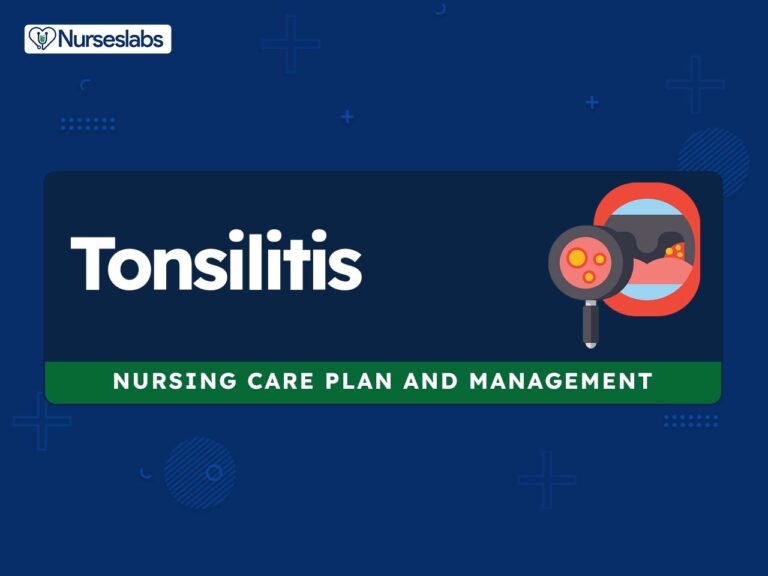
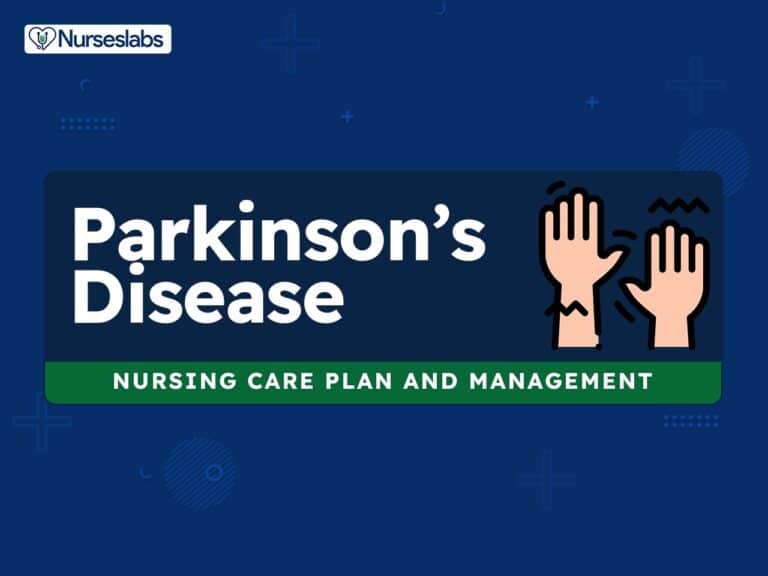





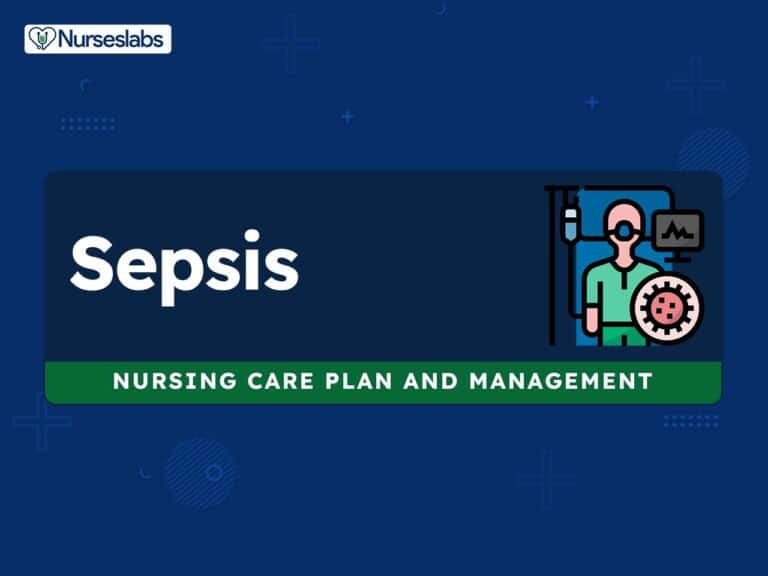

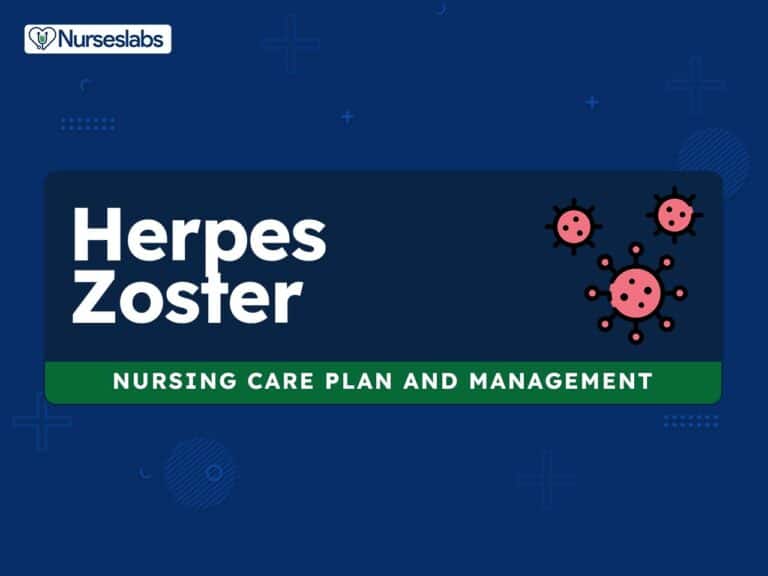
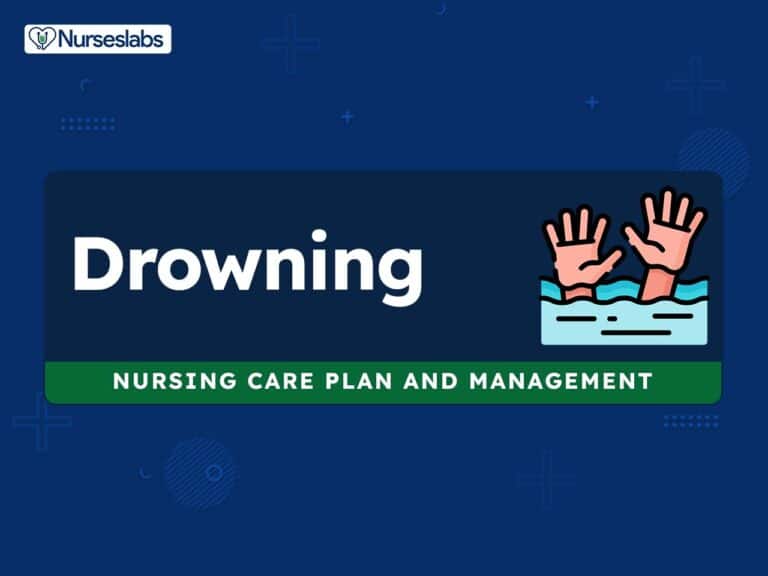

Leave a Comment